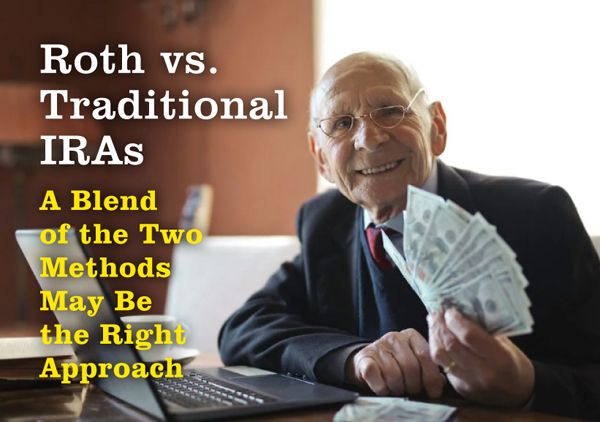
The Roth IRA has been a popular retirement vehicle since its introduction in 1997. This is because it offers the potential for tax-free growth, which can be a significant advantage over traditional retirement accounts.
However, there is some uncertainty about how future tax rates will affect the value of a Roth IRA. If tax rates rise, the Roth IRA will be more valuable, since the tax-free growth will be worth more. On the other hand, if tax rates fall, the traditional IRA will be more valuable, since the tax deduction on the initial contribution is more valuable.
One way to cope with this uncertainty is to “tax-diversify” between traditional and Roth. This means splitting your contributions between the two types of accounts, so that you have some exposure to both scenarios.
Imagine you receive a $6,000 bonus from your employer. You can either contribute it to a traditional IRA or a Roth IRA. Which one is the better choice?
With a traditional IRA, you get a tax deduction on your contribution. So, if you’re in the 22% tax bracket, you’ll save $1,320 in taxes right away. However, when you withdraw the money in retirement, you’ll have to pay taxes on it at the then-current rate.
With a Roth, you don’t get a tax deduction on your contribution. But when you withdraw the money in retirement, it’s tax-free.
Which one is the better deal? It depends on your tax bracket now and in retirement.
If you’re in a high tax bracket now, the traditional account may be the better choice. You’ll get a tax deduction on your contribution, and you’ll only have to pay taxes on the money when you withdraw it in retirement at the tax rate at the time of withdrawal.
If you’re in a low tax bracket now, the Roth may be the better choice. You won’t get a tax deduction on your contribution, but you’ll never have to pay taxes on the money in retirement.
The Bottom Line
Ultimately, the decision of whether to contribute to a traditional or a Roth is a personal one. You need to weigh the pros and cons of each option and decide what’s best for you. But the math shows that the two accounts can have the same after-tax value, depending on your tax bracket now and in retirement.
A better approach might be to “blend” your contributions. This means timing your contributions to traditional and Roth IRAs based on your expected tax rate. For example, if you expect your tax rate to be high in the current year, you might contribute to a traditional IRA. If you expect your tax rate to be low in the future, you might contribute to a Roth IRA.
Additionally, you can tax-plan to take additional deductions in a particular year and offset your contribution to the Roth that way. For example, you may have some capital losses or perhaps you make a larger contribution to your favorite charity.
This approach allows you to maximize the benefits of a Roth, while also minimizing the risk of future tax changes. It is also relatively easy to implement, as you can simply adjust your contributions each year based on your current tax situation.
The Roth IRA is a powerful retirement savings vehicle. However, it is important to understand the potential impact of future tax rates on its value. By “blending” your contributions, you can maximize the benefits of a Roth, while also minimizing your risk.
The Limits of Tax Diversification
In practice, tax diversification may not really work the way you might think. That’s because the outcomes of tax rate changes are directly related to each other. If tax rates go up, the Roth account was the better choice because you don’t have to pay taxes on the money coming out of the account. They work in a 1 to 1 inverse ratio.
On the other hand, if tax rates go down, the traditional account was the better choice. That’s because the tax deduction you got on your traditional contributions was higher than the tax you have to pay when you take the money out.
In reality, tax diversification is more like hedging. You’re not really diversifying your risk; you’re just hedging your bets against one particular outcome.
The better way to think about tax diversification is to consider your expected tax rate in the future and to plan and invest accordingly.
(Disclaimer: The information contained in this article is for informational purposes only. It is not tax, legal or financial advice. Every individual’s personal situation is different, and concepts discussed may or may not apply to you. Please consult a financial advisor before making any major financial decisions.)












